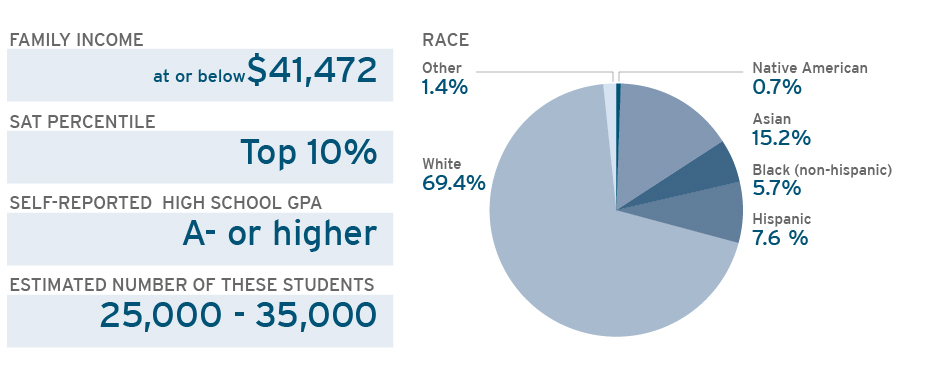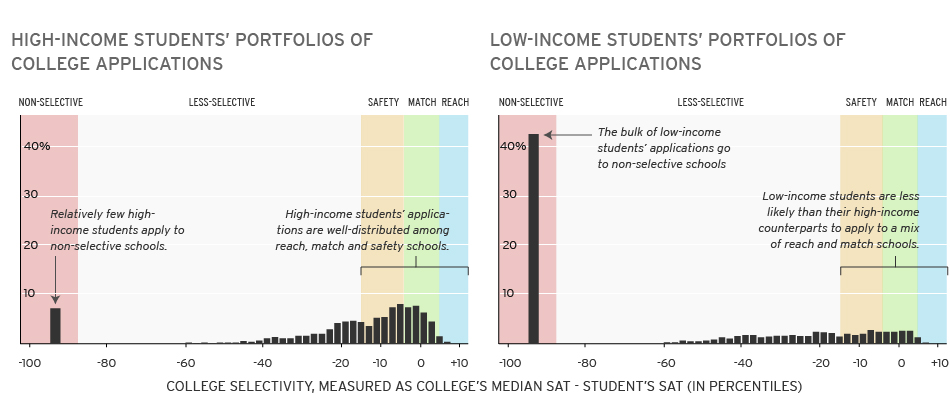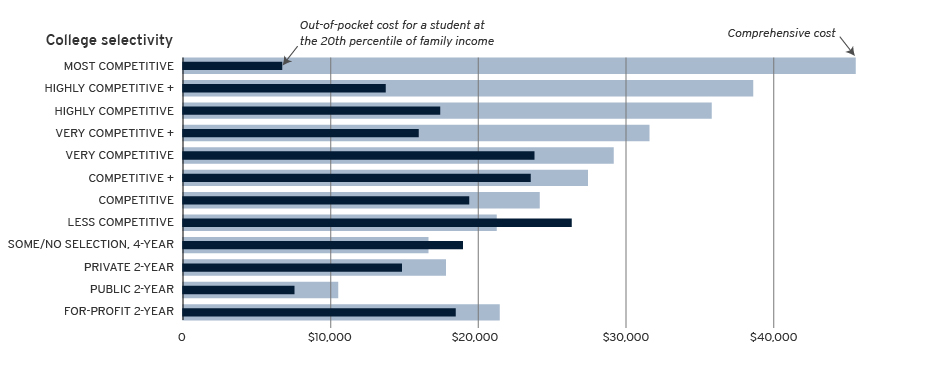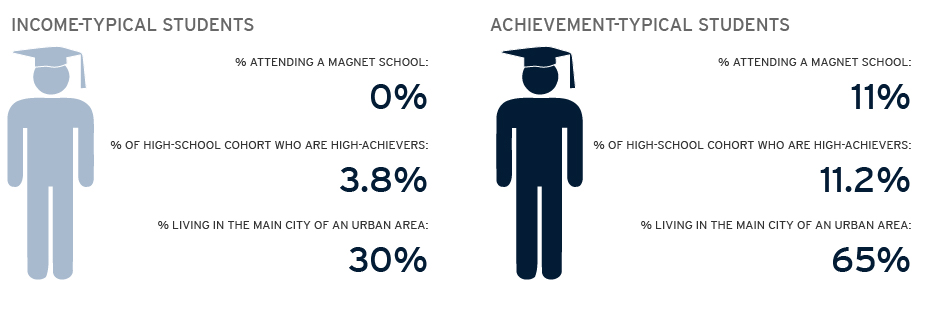A study presented by Caroline M. Hoxby and Christopher Avery at the Spring 2013 Conference on the Brookings Papers on Economic Activity examines low-income, high-achieving high school students in the U.S. The study finds that many of these students don't apply to selective colleges, even though these colleges tend to have more generous financial aid packages than less-selective institutions. Below are some of the key findings of the report. For detailed methodology, notes and sources, refer to the full report.
Low-income, high-achieving students are those who score in the top 10% of SAT scores and who come from families with income levels at or below $41,472. Slightly over two-thirds of these students are white, and 15% are Asian. The study’s authors estimate that there are between 25,000 and 35,000 of these students in the U.S.
Read more »

Expert guidance counselors typically advise students to apply to a mix of schools: several that are a “reach”, four or more schools that are “par” or “match”, and one or more schools that are “safe.” High-income students tend to follow this advice and apply to a mix of schools. But few low income students do this -- the bulk of their applications are to non-selective schools.
Read more »

While low-income students tend to apply to less-selective schools, these schools usually have higher out-of-pocket costs than more selective institutions.
Read more »

The study separates low-income, high-achieving students into two categories: those whose application behavior is similar to that of their high-income counterparts ("achievement-typical" behavior) and those whose apply to no selective institutions ("income-typical" behavior). In contrast to the achievement-typical students, the income-typical students come from districts too small to support selective public high schools, are not in a critical mass of fellow high achievers, and are much less likely to be living inside the main city of an urban area.
Read more »
